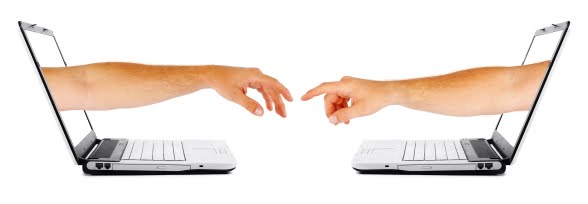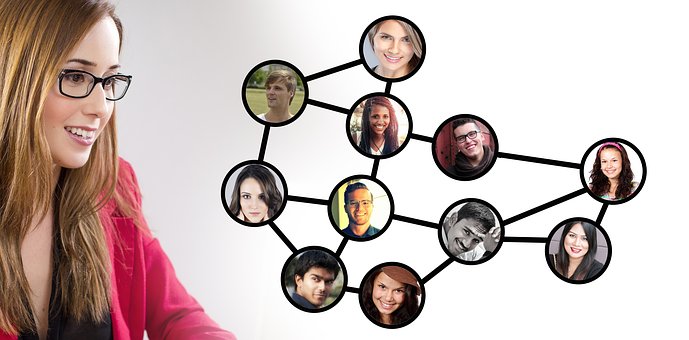
1: Get Help (FS)
2: Genealogical Societies
3: Collaborate
4: Help Another Person
5: Publish a Family History
6: JAWS
FS Project 6
 Translation Tips
Music
Translation Tips
Music

![]()
Project 6: Help
Goal 3: Collaborate with Others

Goal 3: Collaborate with others doing family history work.
Working with others helps you get more done on your own work, as well as giving you the chance to help others. In the process, your data usually becomes more reliable, and you may form lasting friendships with those you partner with in family history.
ChoicesVault
AShare your family history efforts.
Remember to get permission from living individuals if you share their information.
- Watch these videos for ideas on sharing your family history information with others.
 AC—Quick Ways to Share Family History—15:31 - 2012
AC—Quick Ways to Share Family History—15:31 - 2012
 FS—Share with Others—3:08 - 2011
FS—Share with Others—3:08 - 2011 - Here are some tips on collaborating with other researchers.
 FL—Genealogy Research in the 21st Century Part 3: Collaboration and Personal Communication - 2020
FL—Genealogy Research in the 21st Century Part 3: Collaboration and Personal Communication - 2020 - See also www.Family.me for building a collaborative family tree.
- Join the 52 Ancestors in 52 Weeks Challenge - 2019. You'll receive weekly prompts on ways you can share your family history findings with others.
- Here are some additional tips on sharing your family history.
 RT—Sharing Family History in Fun and Modern Ways - 2019
RT—Sharing Family History in Fun and Modern Ways - 2019
 LDS—Sharing Your Family History - 2018
LDS—Sharing Your Family History - 2018 - Social Media: Learn how blogging and social networking can help you collaborate on family history.
 BYU—Blogging and Social Networking for Genealogists—62:53 - 2017
BYU—Blogging and Social Networking for Genealogists—62:53 - 2017

 How to Network with Family Members Using Social Media for Genealogy Research - 2016
How to Network with Family Members Using Social Media for Genealogy Research - 2016
- Use social media to share your family history efforts.
 AAC—Cousin Bait: Making Social Media Work for You (collection)
AAC—Cousin Bait: Making Social Media Work for You (collection) - Learn how to use social media for your family history research queries.
 BYU—Leveraging Social Networking Resources for Genealogical Queries—60:05 - 2022
BYU—Leveraging Social Networking Resources for Genealogical Queries—60:05 - 2022

- * Good: Use one of the methods above to share your family history with others.
- * Proficient: Use several of the methods above to share your family history with others.
BWork with others on family history.
Summary
- Working with others requires planning. Make sure to divide up tasks and keep up communication to avoid duplicate efforts.
- Get family members or friends involved in collecting memories (photos, documents, stories, etc.) to be uploaded to your tree.
- Divide up family lines for research, to avoid duplication of effort.
- Keep each other informed about progress achieved as well as roadblocks that remain.

Resources
- Study these resources for additional ideas about working with others on family history.
 AC—Quick Tips for Increasing Collaboration—32:08 - 2015
AC—Quick Tips for Increasing Collaboration—32:08 - 2015

 FS—Crowdsourcing Collaboration - 2014
FS—Crowdsourcing Collaboration - 2014 - Learn how you can collaborate with other generations on your research.
 MH—How to Collaborate with Other Generations on Your Genealogical Research - 2019
MH—How to Collaborate with Other Generations on Your Genealogical Research - 2019 - Here are some tips on involving others who may be reluctant to participate in family history.
 AF—Drawing Those Hesitant Relatives into Your Family Tree Research - 2016
AF—Drawing Those Hesitant Relatives into Your Family Tree Research - 2016
 AF—How I Got My Family Involved In Genealogy Research
AF—How I Got My Family Involved In Genealogy Research - Locations: Learn how to create an online community for a town you are researching.
 RT—Creating an Successful Online Community for the Town You're Researching—20:08 - 2022
RT—Creating an Successful Online Community for the Town You're Researching—20:08 - 2022

- Microtasks: Learn how to use "microtasks" to spread family history assignments.
 BYU—Using Microtasks to Involve Everyone in Family History Research—27:38 - 2018
BYU—Using Microtasks to Involve Everyone in Family History Research—27:38 - 2018

- Mailing Lists: Learn how to use mailing lists on Ancestry to keep in touch with others who are researching similar surnames or topics.
 AAC—How to Find Mailing Lists—1:38
AAC—How to Find Mailing Lists—1:38 - Family Tree: Learn how to collaborate effectively with others who are working in the FamilySearch Family Tree.
 BYU—Tips for Working Collaboratively on the FamilySearch Family Tree—60:37 - 2022
BYU—Tips for Working Collaboratively on the FamilySearch Family Tree—60:37 - 2022
- Other Trees: Learn how to share photos and documents that pertain to people in other family trees.
 RT—Putting Things In Their Place: Paying it forward in the digital age—23:42 - 2022
RT—Putting Things In Their Place: Paying it forward in the digital age—23:42 - 2022
- * Good: Identify one or two collaborators for your family history work. Contact them and get started with your collaborative research.
- * Proficient: Same as above, with at least 5 collaborators.
COrganize or participate in family gatherings that promote family history.
Vault Summary
- Family history gatherings are opportunities to learn more about family members while also sharing genealogical information and planning how to distribute future research that needs to be done.
- Plan for successful family history reunions.
 GC—Tips for the Size and Shape of Your Reunion
GC—Tips for the Size and Shape of Your Reunion
 GC—Sharing Family History at the Reunion
GC—Sharing Family History at the Reunion - Involve and include more family members in family history activities.
 GC—What Should We Do at the Reunion?
GC—What Should We Do at the Reunion? - Here are some tips for including family history in your next reunion.
 FS: 3 Tips for Including Family History at Your Next Reunion - 2024
FS: 3 Tips for Including Family History at Your Next Reunion - 2024
 AF— 11 Genealogy Research Tips to Use at Your Next Family Reunion - 2015
AF— 11 Genealogy Research Tips to Use at Your Next Family Reunion - 2015 - Learn about holding virtual family reunions.
 RT—Strengthening Family Bonds through Virtual Reunions - 2016
RT—Strengthening Family Bonds through Virtual Reunions - 2016
Exercises
- * Good: Participate in the planning for a family history reunion.
- * Proficient: Lead the planning for a family history reunion.
DJoin an online user group or forum for a genealogy website.
Here are some noted user groups and online communities for genealogy and family history:
- Ancestry—Member-to-Member Support Community
- Ancestry—Message Boards
- MyHeritage—MyHeritage Users Group (Facebook)
- Roots Web—RootsWeb WorldConnect Community Trees Index
- Use the Member Connect feature in Ancestry to stay in touch with other Ancestry members who are researching common ancestors. For details on Member Connect, see this page.
- For tips on writing queries to online help groups, read this article.
 OT—Good Query vs. Bad Query - 2017
OT—Good Query vs. Bad Query - 2017 - Explore the GenForum Message Board for answers to questions.
- On Facebook, contact the RootsMagic user group or the Legacy Family Tree user group for answers to questions on their respective software versions.
- Learn how to use mailing lists and message boards to help solve your research brick walls.
 RT—Crowdsourcing Your Brick Walls, Part 1—16:50 - 2021
RT—Crowdsourcing Your Brick Walls, Part 1—16:50 - 2021


ECreate or join a family association.
Summary
- Family associations are an additional source of information that build connections and are a way of sharing information with the people it is most relevant to.
- Read the article for an introduction to family associations.
 GC—Family Associations 101
GC—Family Associations 101 - Learn about effective ways to run a family association.
 GC—Running a Family Association
GC—Running a Family Association - Create a Facebook group for your family.
 FS—Facebook and Family History - 2016
FS—Facebook and Family History - 2016 - Publish a periodical for your family association.
 GC—Publishing a One-Family Periodical
GC—Publishing a One-Family Periodical
